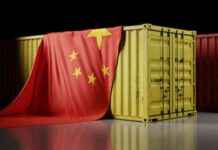Alright, let’s dive into Apple’s iPhone production and why it’s mostly done in China. So, it seems like President Donald Trump is not too happy about Apple making their iPhones abroad. He’s demanding that they start making them in the good ol’ US of A or face some hefty tariffs. But Apple seems to have other plans. Instead of moving production back home, they’ve been shifting it to countries like India, Vietnam, and Thailand. In fact, a whopping 80% of iPhones are still being made in China. So, why not just bring it back home, you ask? Well, according to experts, it would cost Apple a pretty penny to do so. They would need to invest in new machines, rely more on automation, and probably end up doubling the prices of iPhones. Yikes!
Why is Apple so hesitant to move production to the US? Well, for starters, the company believes that in about 10 years, people might not even need iPhones anymore. They’re already working on new devices with artificial intelligence that could replace the iPhone altogether. So, investing a ton of money in relocating production might not be the smartest move. Plus, they had a bit of a rough time when they tried to assemble Mac desktop computers in the US back in 2013. Employees walking off the assembly line and struggling to find suppliers for tiny custom screws? Not a good look.
But what does China have that the US doesn’t? Well, for one, they’ve got small hands. Yep, you read that right. Young Chinese women with nimble fingers are like pros at putting together those tiny iPhone parts. And let’s not forget about the massive workforce that migrates around the country to work in factories. They work hard from summer until Chinese New Year, so Apple doesn’t have to pay them for a full year of work. China also has a surplus of engineering talent, something the US seems to be lacking. Tim Cook once said China has enough engineers to fill multiple football fields, while the US barely has enough to fill a room. Ouch.
So, Apple has been shifting some of its iPhone production to India to avoid local taxes and tap into the growing smartphone market there. But don’t be fooled, most of the critical components are still being made in China. These parts are then shipped to India, where they’re put together like a fancy Lego set. This way, Apple can claim their iPhones are assembled in India and avoid those pesky US tariffs. Smart move, Apple.
In the end, Apple still heavily relies on China for its iPhone production. Despite efforts to diversify, most of the work is still being done in China. Maybe one day, things will change. But for now, China remains the go-to spot for assembling those iconic iPhones. Who knows what the future holds for Apple and its production line? Only time will tell.


















